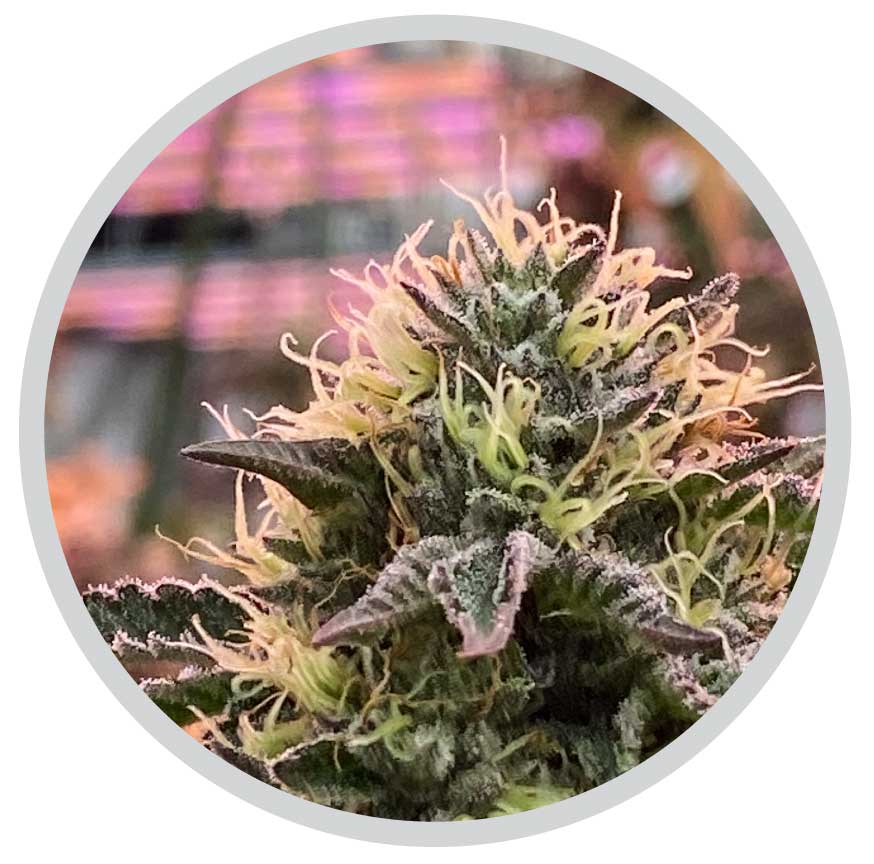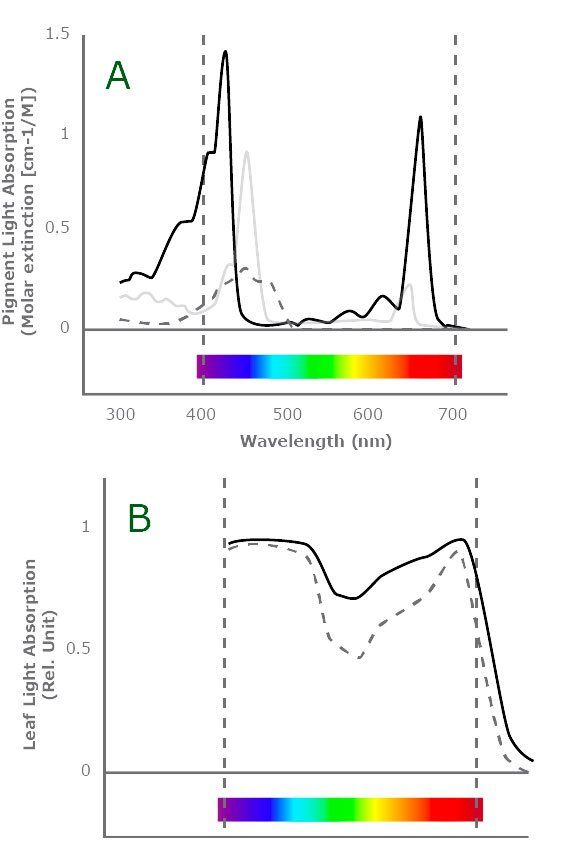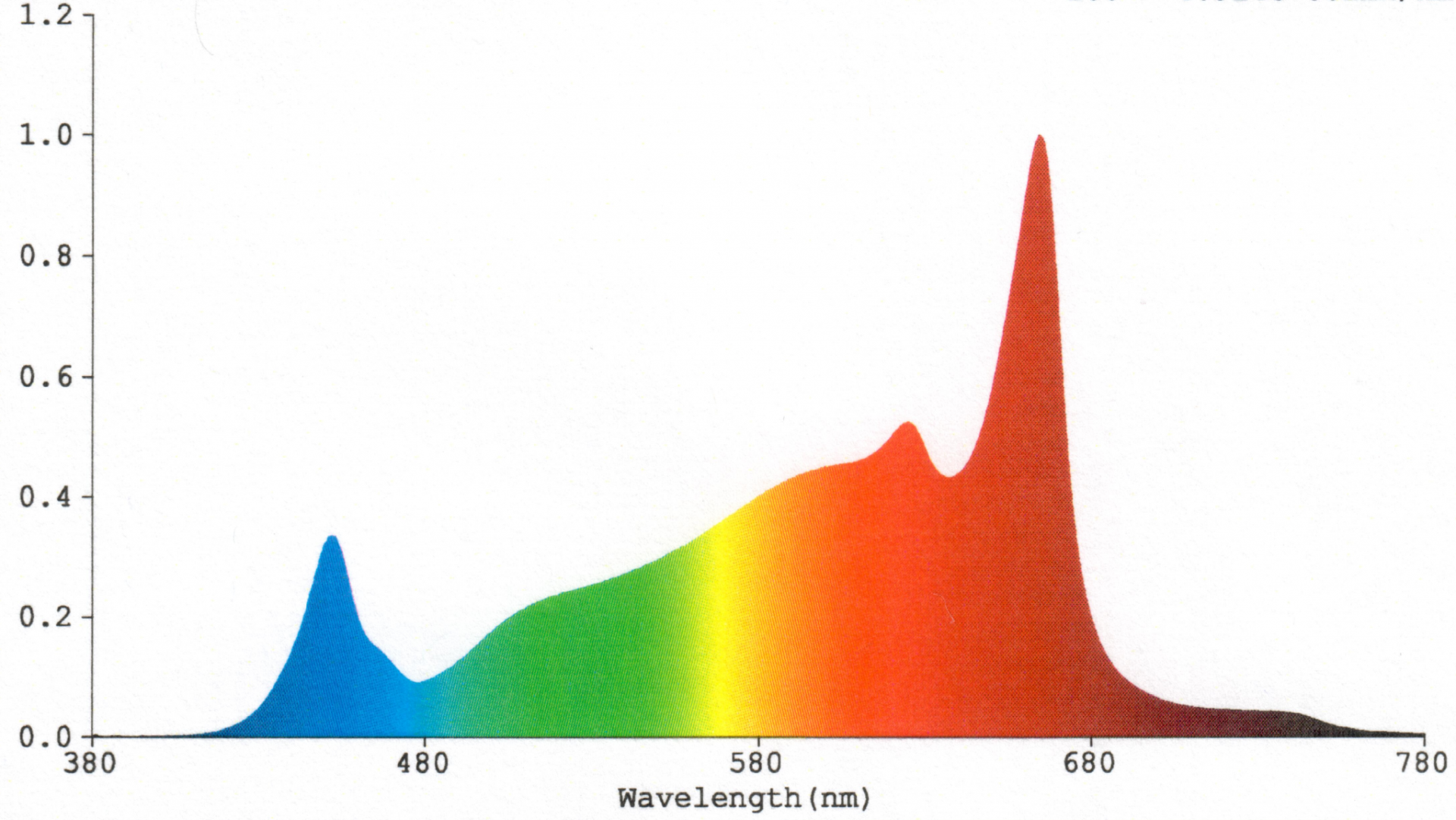
SPECTRUM
Importance of a Full Spectrum

Plants perceive and adapt to their environmental surroundings for optimal growth and development. Illumination is the most powerful environmental stimulus for plant growth and plants have sophisticated sensing systems to monitor light quantity, quality, direction, and duration. Pigments and photoreceptors present on plants control plant photosynthetic and photomorphogenic processes.
The range of light that induces photosynthesis in plants is called Photosynthetically Active Radiation (PAR), and is defined as radiation over the spectral range of 400 to 700nm. Every absorbed photon regardless of its wavelength contributes equally to the photosynthetic process. The range of light that generates photomorphogenic processes ranges from 350 –750nm. These processes play a major role in the development of new tissues. The common unit of measurement for PAR is Photosynthetic Photon Flux Density (PPFD), measured in units of moles per square meter per second.
Essential for
Metabolite Production
The plant’s metabolite production is also influenced by light spectrum. In addition to the primary metabolites of carbohydrates and amino‐acids, secondary metabolites are also influenced by light quality. Many secondary metabolites are key components for plant defensive mechanisms. They also contribute to odors, tastes, and colors. At this point, little is known about the manipulation of these secondary metabolites under artificial illumination systems. But it is known that restricting the light spectrum to a handful of wavelengths can be detrimental for plant development.
Using LED technology allows us to manipulate the light spectrum to trigger benefits in indoor production systems. With indoor lighting, it is possible to create a custom-designed spectrum to control plants’ development cycle and enhance biomass production.
Beyond the benefits offered by LED technology, GrowRay’s grow lights exploits the advantage of LEDs’ controllability. Using a combination of full spectrum emitters along with specially selected monochromatic LEDs, we can control a plant’s developmental pathways. This stimulates photomorphogenic processes and maximizes biomass production through the photosynthetic process.

The Importance of a
Full Spectrum Light
Plants perceive and adapt to their environmental surroundings for optimal growth and development. Illumination is the most powerful environmental stimulus for plant growth and plants have sophisticated sensing systems to monitor light quantity, quality, direction, and duration. Pigments and photoreceptors present on plants control plant photosynthetic and photomorphogenic processes.
The range of light that induces photosynthesis in plants is called Photosynthetically Active Radiation (PAR), and is defined as radiation over the spectral range of 400 to 700nm. Every absorbed photon regardless of its wavelength contributes equally to the photosynthetic process. The range of light that generates photomorphogenic processes ranges from 350 –750nm. These processes play a major role in the development of new tissues. The common unit of measurement for PAR is Photosynthetic Photon Flux Density (PPFD), measured in units of moles per square meter per second.

Blue Light
The selected blue LED in GrowRay grow lights affect leaf movement, leading to flatter leaves, which result in a more efficient surface for light absorption. It also encourages fast leaf expansion, resulting in larger surfaces for light absorption and photosynthetic activity. Another very important attribute of the blue is related to stomatal activity regulation. Stomata are little apertures on the leaf surface which allow CO2 to move into the leaf. Higher concentrations of CO2 inside the leaf induce higher rates of carbon fixation and biomass production. Blue light induces stomata opening and allows for higher fluxes of CO2 inside the leaf.

Red Light
The main photosynthetic pigment present in plants, chlorophyll a, has its light absorption peak at 660nm (red spectrum). LED in this wavelength are also part of the GrowRay proprietary spectrum. Using red LED GrowRay lights provides higher PAR values at lower energy consumption, maximizing energy use efficiency. Red light (together with far‐red light), also activates the photoreceptors responsible for flowering and photoperiod regulation, the phytochromes.

Warm White Light
All GrowRay lights are equipped with white LED, which deliver full spectrum light to ensure primary and secondary metabolite production. GrowRay warm white LED are selected to match the required spectrum for optimal plant development throughout the veg and flowering stages. The white lights provide a constant full spectrum light supply, allowing for photomorphogenic processes to be controlled by individual blue, red and far‐red emitter manipulation without compromising photosynthetic activity. It ensures that the required light flux maintains optimum light energy conversion throughout the entire plant growth cycle.

Far-red Light
GrowRay is pioneering the use of far‐red emitters in commercial LED lights. GrowRay lights are equipped with supplemental far‐red LED, that in conjunction with the red LED, provide light at phytochrome absorption peaks. Controlling the duration and ratio of red/far‐red light makes it possible to control plant behavior to increase biomass production and accelerate plant growth.
- Day Use Recommendation: The far‐red light provided by GrowRay increases photosynthetic efficiency, avoiding energy imbalances that can occur inside the photosynthetic apparatus under high‐light conditions. It allows the plants to convert more light energy into chemical energy which is required for biomass production and plant growth.
- End of Day Recommendation: (Research project underway to provide scientific data). Cannabis plant flowering is regulated by the photoperiod process. The cannabis photoperiod requires a minimum of 12 hours of darkness to flower. This process is controlled by the phytochrome photoreceptors. GrowRay far‐red emitters can manipulate the phytochrome response and trigger the plants into shorter dark periods, providing additional time for more flowering.
Growray Full Spectrum
To achieve maximum biomass production with less energy consumption and ensure healthy plant development, GrowRay has designed a custom light balance taking advantage of the latest LED technology. The specially formulated light balance regulates key plants developmental process while maximizing photosynthesis. Using especially selected wavelengths at red (660nm), blue (450nm) and far‐red (730nm) combined with the full spectrum warm white LEDs, GrowRay’s spectrum can maximize plant flowering, photoperiod, leaf expansion, and plant shape while ensuring optimal biomass production.This spectrum provides a superior recipe for cannabis production and tailored photomorphogenic response. GrowRay is truly the first PhD-designed LED lighting solution specifically for cannabis greenhouse applications.

For purchasing information and consultations:
Call 720-340-7811 or complete the form below
Fields marked with an * are required
We will get back to you as soon as possible.
Please try again later.
GrowRay Lighting Technologies | [email protected]
Website built on KUSHY
